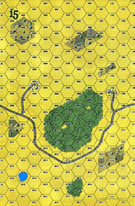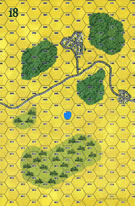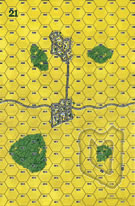|
Bet Lietuvis Neprazus Iron Wolves #8 |
||
|---|---|---|
| (Defender) Lithuania | vs | Soviet Union (Attacker) |
| Formations Involved | ||
|---|---|---|
| Lithuania |  |
2nd Infantry Division |
| Soviet Union |  |
44th Guards Rifle Division |

| Total | |
|---|---|
| Side 1 | 2 |
| Draw | 0 |
| Side 2 | 0 |
| Overall Rating, 2 votes |
|---|
|
5
|
| Scenario Rank: --- of 913 |
| Parent Game | Iron Wolves |
|---|---|
| Historicity | Alt-History |
| Date | 1940-06-01 |
| Start Time | 06:00 |
| Turn Count | 30 |
| Visibility | Day |
| Counters | 158 |
| Net Morale | 0 |
| Net Initiative | 1 |
| Maps | 6: 1, 15, 18, 2, 21, 4 |
| Layout Dimensions | 86 x 84 cm 34 x 33 in |
| Play Bounty | 207 |
| AAR Bounty | 171 |
| Total Plays | 2 |
| Total AARs | 1 |
| Battle Types |
|---|
| Inflict Enemy Casualties |
| Urban Assault |
| Conditions |
|---|
| Entrenchments |
| Off-board Artillery |
| Randomly-drawn Aircraft |
| Scenario Requirements & Playability | |
|---|---|
| Eastern Front | Maps + Counters |
| Iron Wolves | Base Game |
| Road to Berlin | Maps + Counters |
| Introduction |
|---|
|
Lithuania only managed to hold onto Vilnius for just over eight months. Had they chosen to resist the Soviet invasion, the ancient capital would not have been given up without a fight. The Lithuanian infantry was reasonably well-armed, but lacking in artillery and anti-tank weapons. The Soviets were themselves lacking in confidence following the Winter War, but had plenty of modern weapons. |
| Conclusion |
|---|
|
The Red Army's overwhelming superiority in manpower and material would have eventually been brought to bear on the Lithuanians just as it had been on the Finns a few months before. Coming in the wake of the bloody Winter War, fearsome Lithuanian resistance might have brought rational Soviet leaders to the bargaining table. How Great Stalin would respond, however, one can only guess. |
| AFV Rules Pertaining to this Scenario's Order of Battle |
|---|
|
| 2 Errata Items | |
|---|---|

|
The reduced direct fire value in Kursk: Burning Tigers is 4-4. (plloyd1010
on 2015 Jul 31)
|

|
Kommissars never get morale or combat modifiers. Ignore misprints. (Shad
on 2010 Dec 15)
|
| Mob Rule |
|---|
|
This was a tremendous blast. Not because so much happened but because it shows off the PG system in all its glory. A HUGE Soviet force (two entire rifle regiments) is attacking an understrength Lithuanian regiment over a 6 board expanse. The goal is to capture as many of the town hexes as they can (there are 45+) and kill Lithuanians. The Lithuanians, conversely, have to hold towns and kill Soviets. No doubt a fun time for all. The intro indicates that if Lithuania had resisted the Soviet takeover it would have been a "Winter War" type army which it fought. This is depicted by having by having only 13 leaders for 76 units, meaning each leader is responsible for two companies. Since the fight was likely to require urban assaults the leaders would be necessary to provide the needed column bonuses for those assaults and subsequently would not be available to lead bypassing forces to hit lines behind the front. The Lithuanians set up with light forces in a front line along the bottom entry areas for the Soviets (excepting only the southernmost town which would be easily entered and cut off. It should be noted that the Soviets were unable to crush these forces in the towns as time after time the Lithuanians were able to disrupt/demoralize and eliminate the Soviet assaulting forces. Indeed two of these hexes remained undefeated throughout the game! The Soviets had their greatest success in the center of the field where they were able to capture all the town hexes on the southern board by turn 21. Unfortunately with only 9 turns left there was little they could do to bring their force to bear on the large town on board 2 in the northwest corner of the field. In the end the Lithuanians, through holding onto and denying town hexes, were able to have a 7 point lead, enough for a minor victory. Some quick notes about the Soviet forces are in order. The lack of leaders virtually requires the Soviet player to advance in "overstacked" order greatly enhancing the Lithuanian artillery effectiveness. Average morale makes them easy to disrupt and demoralize thus delaying the advance and it is the advance that is important here. The Lithuanians cannot cover all the bases and will leave some easy town hexes to grab (The five hexes on Board 1 were undefended). The Soviet player has to find a way to project their force forward without losing the battles in the front line. Without sufficient leaders this is a difficult task. The Soviets have tons of artillery but it also is subject to the Lithuanian artillery, especially while moving, which it will have to do. Those Lithuanian leaders holed up in assault hexes can still spot for OBA and it will have fun taking out the Soviet artillery on the move. This was a marvelous illustration of exactly how the Soviet army's mass was incapable of doing more than bludgeoning the Finns in the Winter War and why the German army felt that conquering Soviet Russia would be a straightforward task. Lots of lessons in this one and a tense battle to boot. I give it a "5" for accomplishing both tasks. |
| 0 Comments |

 IrWo007
IrWo007 

































